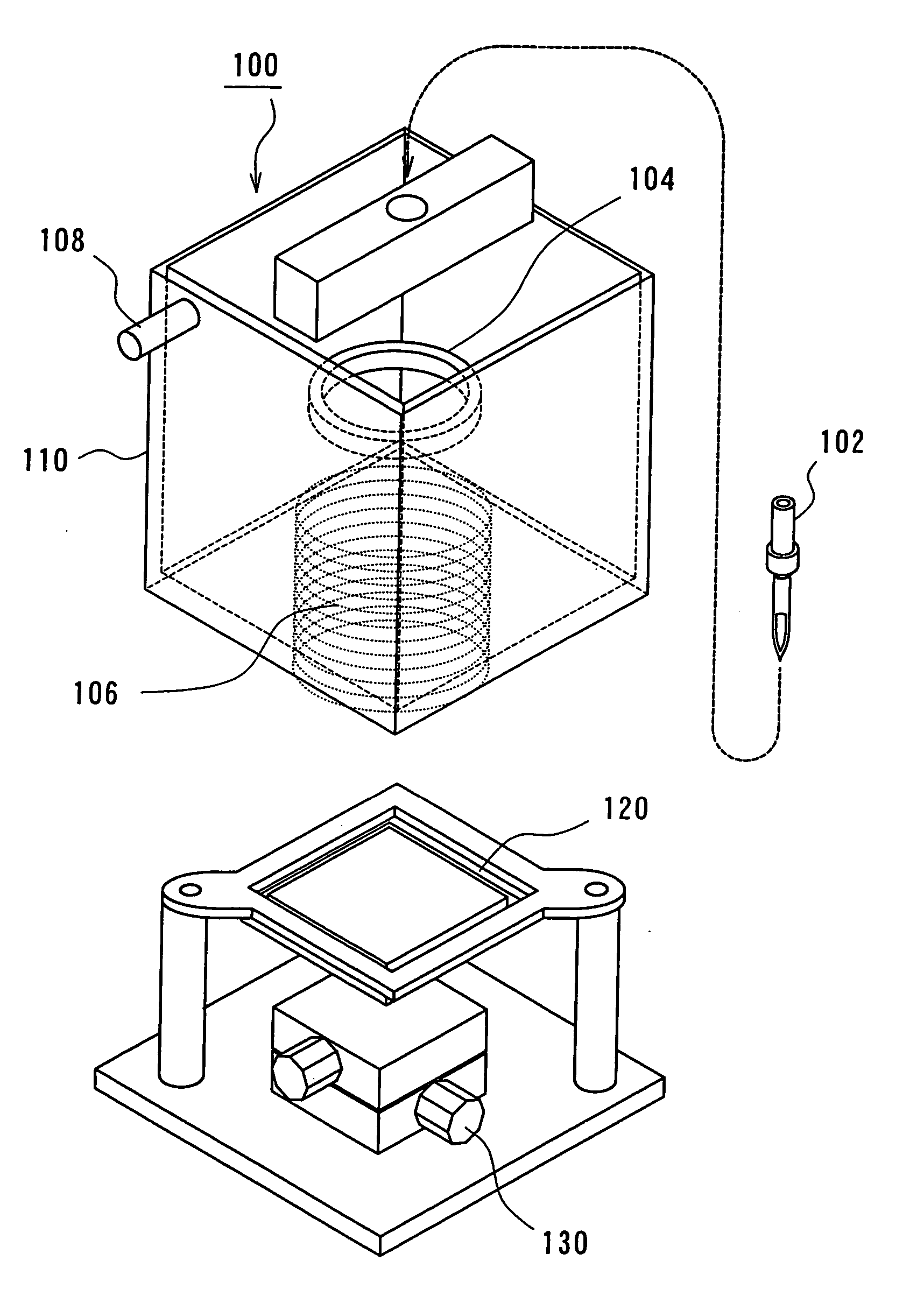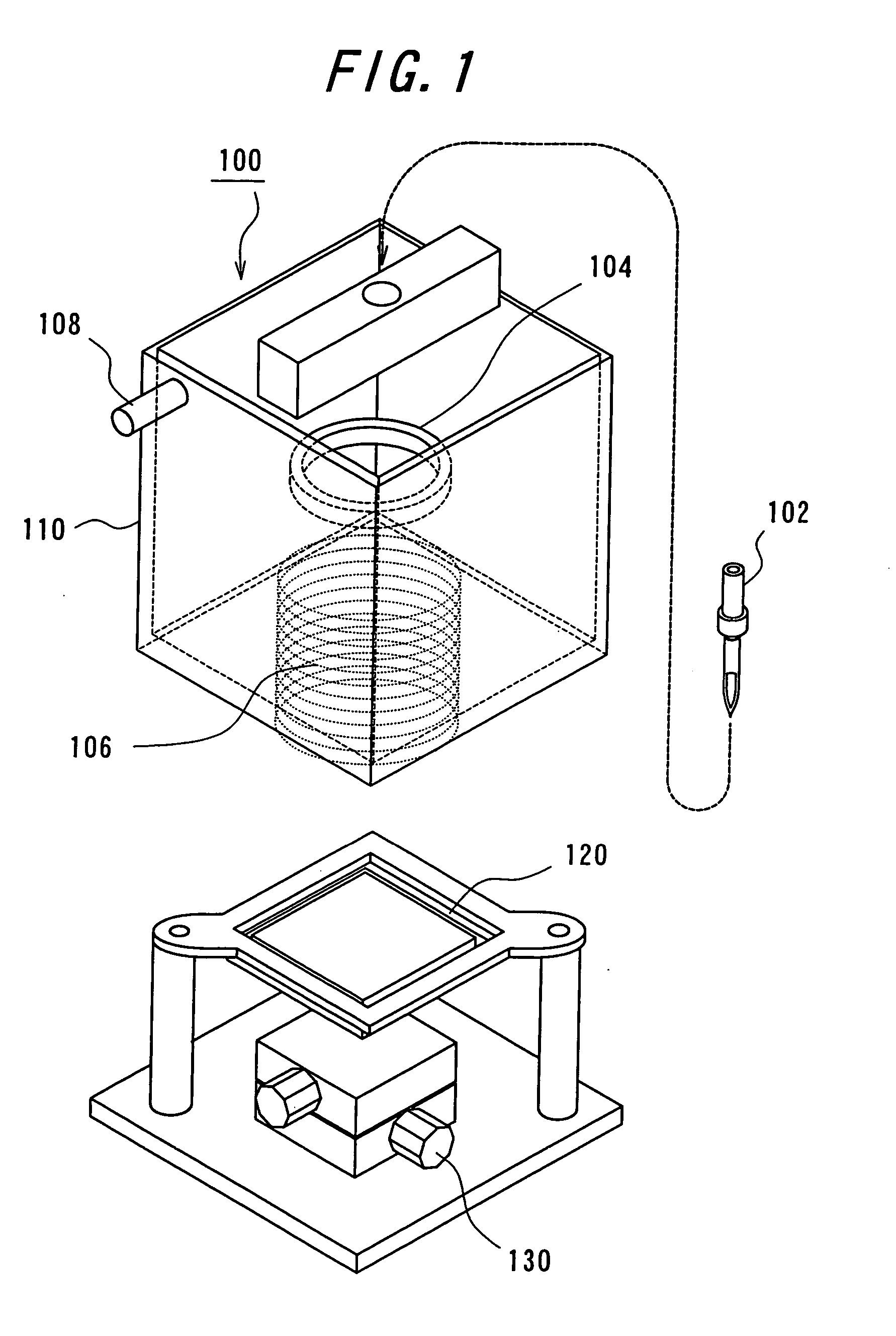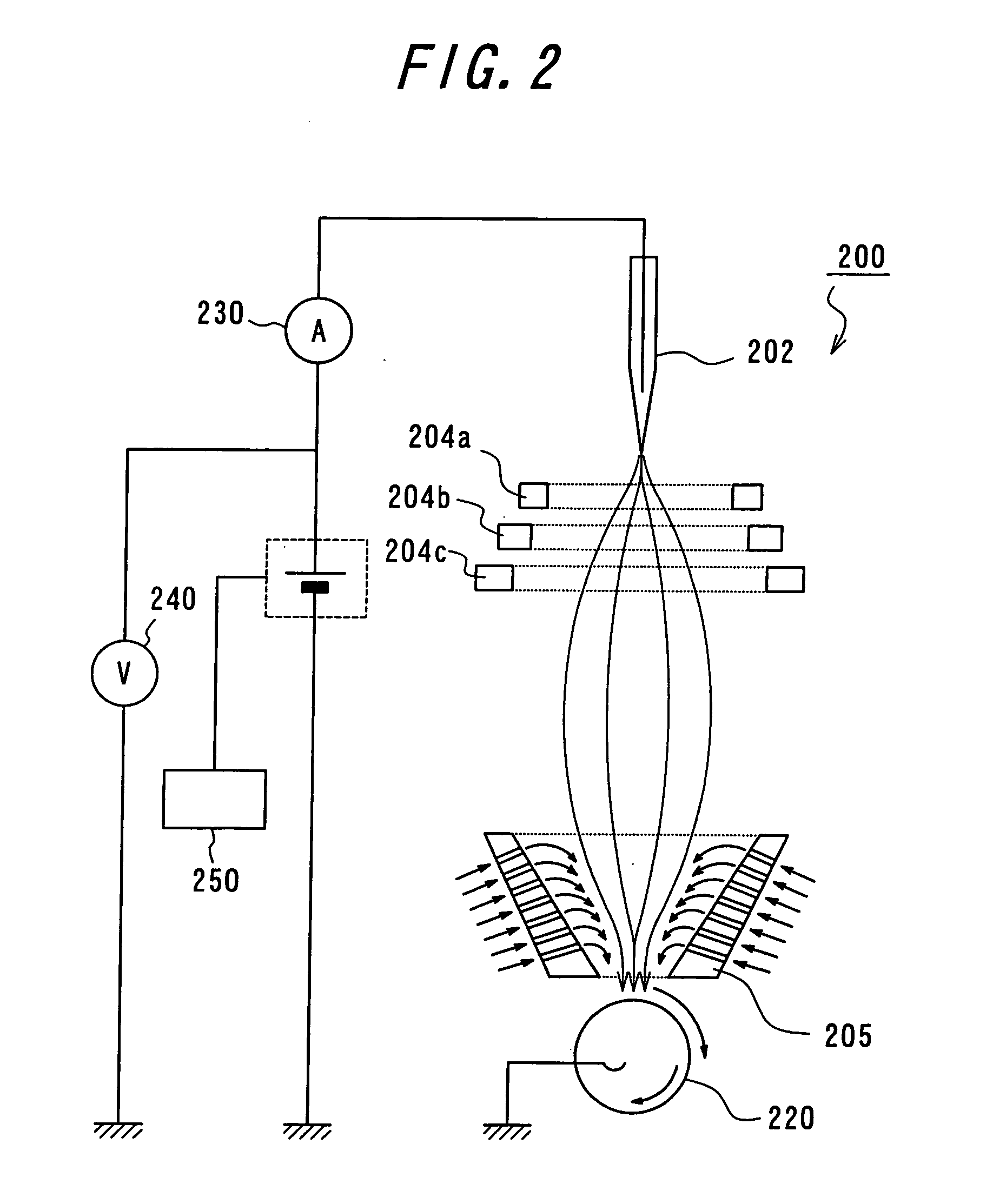Immobilizing method, immobilization apparatus, and microstructure manufacturing method
a technology of immobilizing apparatus and manufacturing method, which is applied in the direction of lighting and heating apparatus, coatings, agriculture, etc., can solve the problems of no solvent having enough volatility, many of them may lose their activities in natural drying, and the functional activity and activity of the objective substance may be lost or damaged, so as to prevent the activity and functionality of the objective substance from being deteriorated, and promote the evaluation of a solvent
- Summary
- Abstract
- Description
- Claims
- Application Information
AI Technical Summary
Benefits of technology
Problems solved by technology
Method used
Image
Examples
Embodiment Construction
[0110]FIG. 1 is a block diagram showing the basic construction of an immobilization apparatus with a single capillary used in an immobilization method according to the present invention. As shown in the drawing, an immobilization apparatus 100 of the present invention comprises a capillary 102, a guard ring 104, a shield 106, a dried air inlet 108, a case 110, a conductive substrate (object to be coated) 120, and a XY stage 130. The capillary 102 comprises an electrode (not shown), and this electrode is used to apply predetermined high voltage to a solution containing an objective substance, which is supplied into the capillary 102. The solution is electrostatically sprayed as fine droplets from the tip of the capillary 102 toward the conductive substrate 120. The guard ring 104 is supplied with collimating voltage, by which the electrostatically sprayed fine droplets efficiently gather near the center of the guard ring 104 and proceed to the grounded conductive substrate 120, with ...
PUM
 Login to View More
Login to View More Abstract
Description
Claims
Application Information
 Login to View More
Login to View More - R&D
- Intellectual Property
- Life Sciences
- Materials
- Tech Scout
- Unparalleled Data Quality
- Higher Quality Content
- 60% Fewer Hallucinations
Browse by: Latest US Patents, China's latest patents, Technical Efficacy Thesaurus, Application Domain, Technology Topic, Popular Technical Reports.
© 2025 PatSnap. All rights reserved.Legal|Privacy policy|Modern Slavery Act Transparency Statement|Sitemap|About US| Contact US: help@patsnap.com



